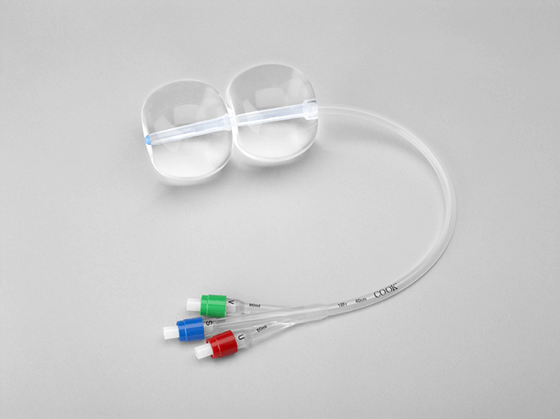
Cook Cervical Ripening Balloon
The cervical ripening balloon is a tube with two silicone balloons. It is an option for dilating the cervix that doesn’t use medicine. It is only used when the patient’s pregnancy is at term (when a baby has reached full size, between 37 and 42 weeks) but their cervix is not soft, thin, dilated, or elastic enough for labor to be induced.
The cervical ripening balloon works by applying consistent pressure to both sides of the cervix throughout the dilation process.
See the balloon we have available today.
Cook® Cervical Ripening Balloon with Stylet
The balloon can be left in place up to 12 hours, and a study has shown that the patient’s Bishop score can be improved in that time frame.¹ After the balloon is removed, the induction continues following the hospital’s standard process.
A 2017 study reported that women experienced “less pain during the entire ripening phase [with the double-balloon catheter] compared with those receiving PGE2 agents [medicine].”²
Another 2017 study found that in women who had their cervix ripened with a balloon catheter, the time from ripening to artificial rupture of membranes was shorter when compared with those given medical gel.³